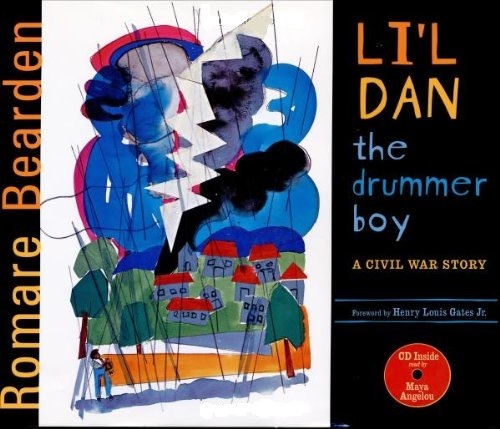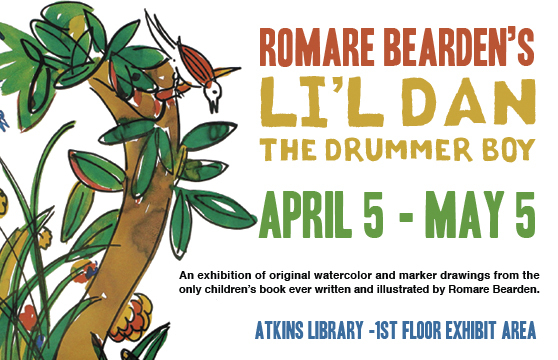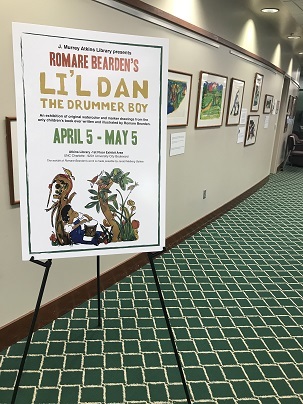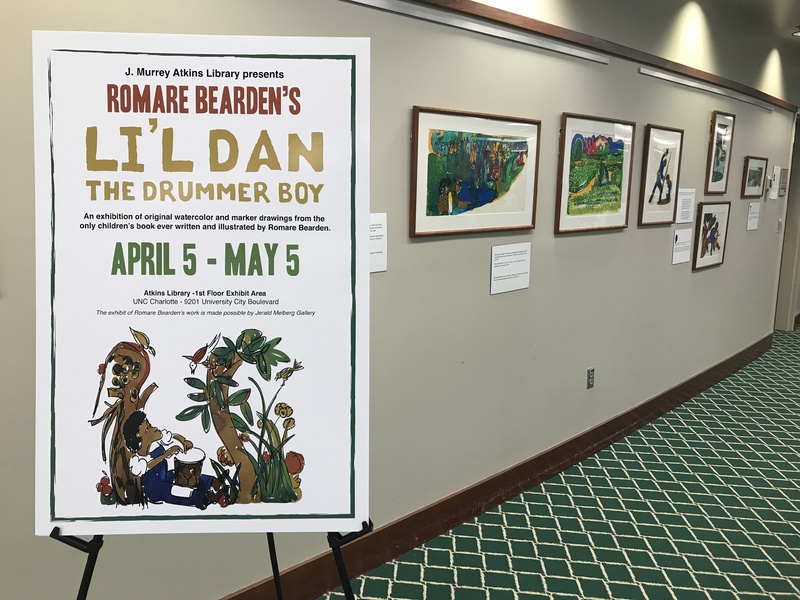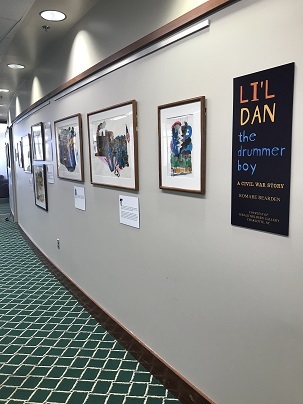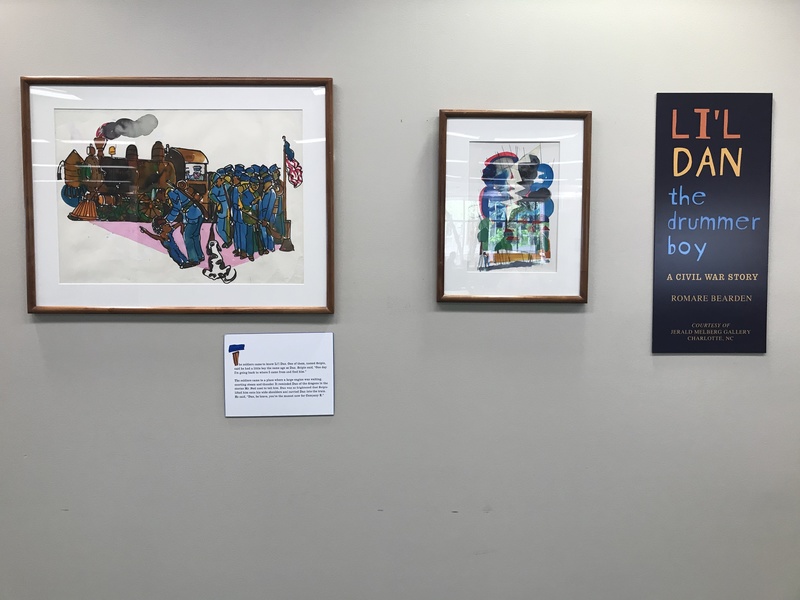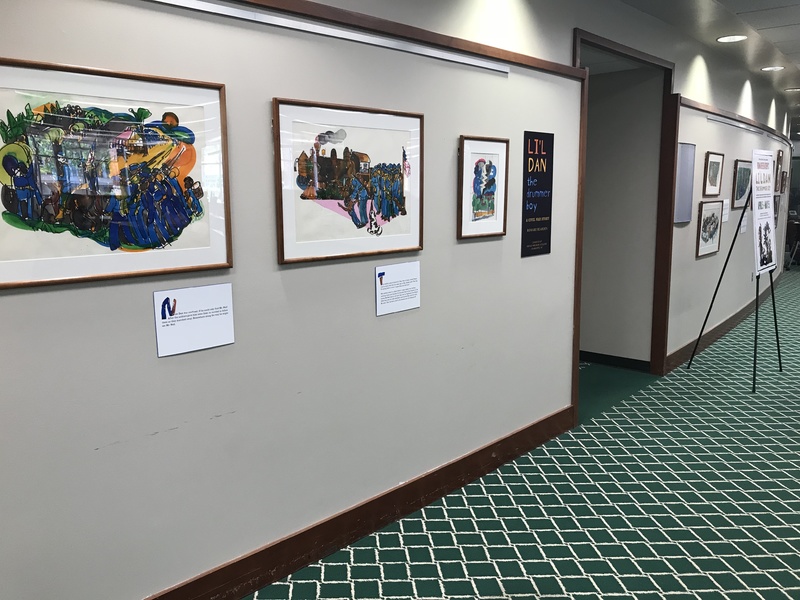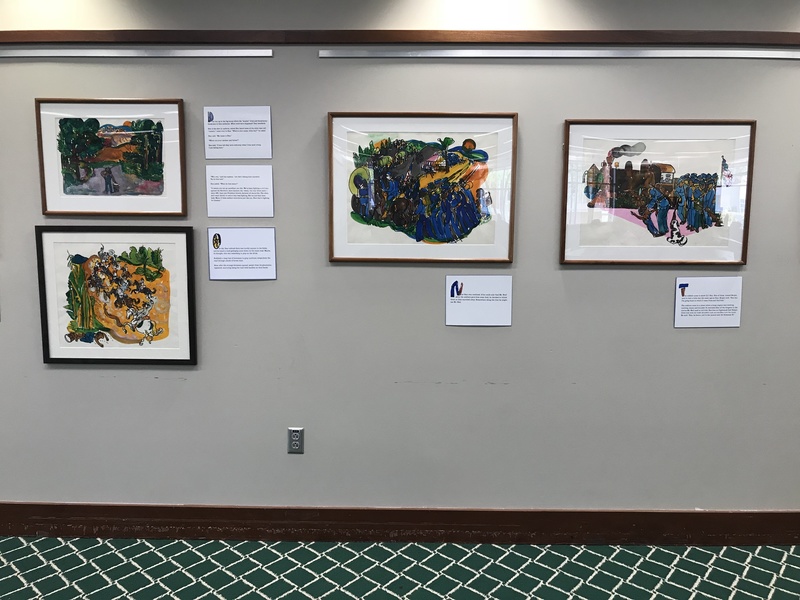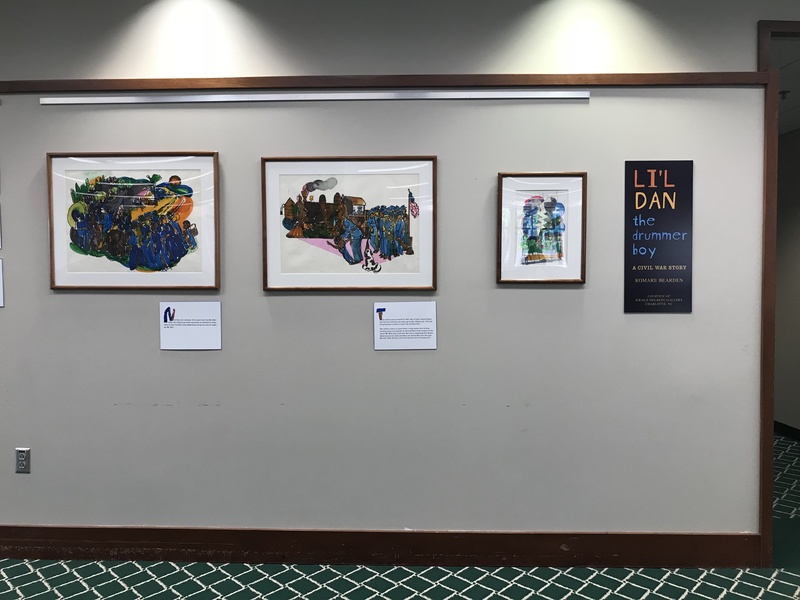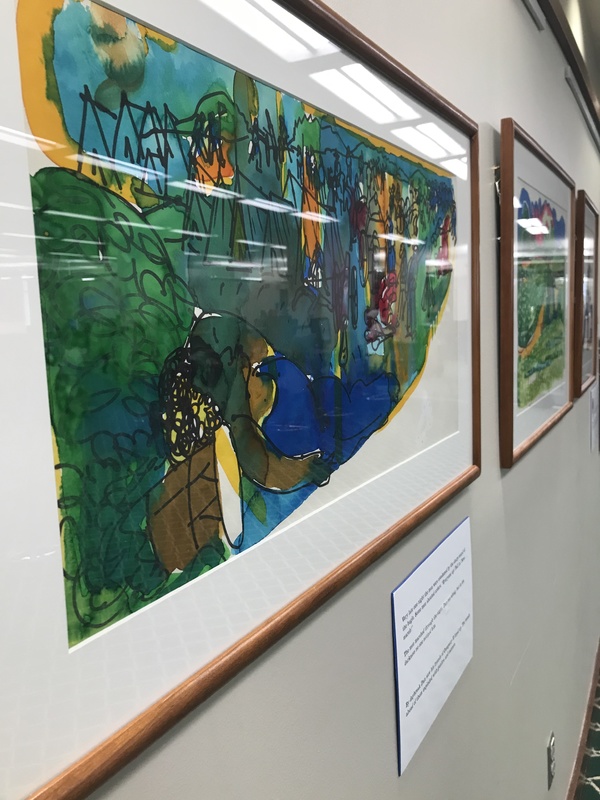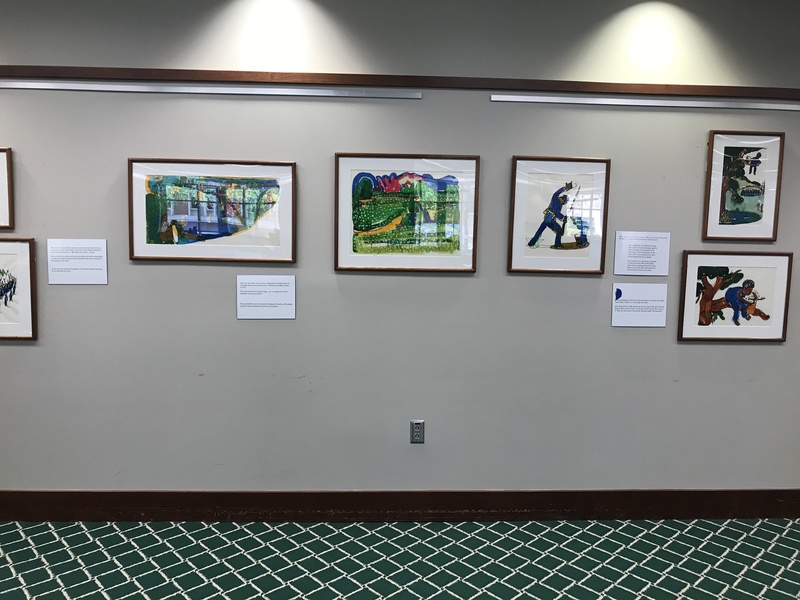Romare Bearden's Li'l Dan the Drummer Boy
Information about the Exhibit
J. Murrey Atkins Library hosted an exhibition of original watercolor and marker drawings from Romare Bearden's only children’s book Li'l Dan the Drummer Boy in April 2018. The book was written and illustrated by legendary American artist and Charlotte native, Romare Bearden (1911–1988). Copies of the book are available in the library collection.
Li'l Dan, the Drummer Boy: a Civil War Story, is the story of Dan, a slave on a Southern plantation who loves to play his drum. When a company of Union soldiers announces that the slaves have been set free, Dan has no place to go, so he follows the soldiers, who make him their mascot. When Confederate soldiers attack, Dan discovers that he is the only one who can save his friends.
Completed in 1983, the book was published posthumously. It includes a personal introduction by Dr. Henry Louis Gates Jr., in which he describes his own memories of the artist. The audio book version is read by Maya Angelou.
The Li’l Dan the Drummer Boy exhibit consisted of 23 framed illustrations with accompanying text panels and were on display in Atkins Library’s first-floor exhibit space from April 5 through May 5, 2018. The exhibit was made possible by Jerald Melberg Gallery.
Biography of Romare Bearden
Romare Bearden was born in Charlotte, North Carolina in 1911. Although he spent the majority of his young adult life in Pittsburgh, PA and later moved to New York City, he made frequent visual reference to his North Carolina roots when his artistic career blossomed during New York City's Harlem Renaissance in the mid-20th century. During this period, he developed his famed collage methodology, which remains his strongest legacy today. The richness of his work can be attributed to his acknowledgement of a diverse array of influences that include old master religious works, modernist paintings, African ritual objects, Byzantine mosaics, Japanese prints, Chinese paintings, and the harmonies and rhythms of jazz and the blues.
Throughout his life, Bearden depicted many rituals and social customs of twentieth century rural Black America. The images of spiritual ceremonies, baptisms and burials, industrial factory life, musical arrangements and daily life recalled from his childhood in North Carolina, have become the themes that critics and collectors most frequently associate with his work. Romare Bearden's collages and prints are beautiful to behold and fantastic to contemplate.
Though Bearden is best known for his collages, he is also acknowledged for his works in watercolor. These watercolors were largely created during the winters Bearden spent with his wife Nanette in her native St. Maarten and they reflect the tropical vegetation and vistas of the region. Additionally, he produced editions of prints based on many of his collages.
Bearden received numerous awards and honors during his lifetime, including the National Medal of Arts in 1987, the State Medal of North Carolina for Art in 1976, and the Frederick Douglas Medal of the New York Urban League in 1978.
Romare Bearden's most comprehensive retrospective to date premiered in 2003 at The National Gallery of Art in Washington, DC. Past traveling retrospectives have been organized by the Museum of Modern Art (1970), the Mint Museum of Art (1980), the Detroit Institute (1986), the Studio Museum in Harlem (1991), and the Council for Creative Projects (1992).
Bearden’s works are now housed in the permanent collections of major American museums, including The Art Institute of Chicago, The Brooklyn Museum, The High Museum of Art, The Hirshhorn Museum, The Metropolitan Museum of Art, The Museum of Modern Art, The Mint Museum, The Philadelphia Museum of Art, The Studio Museum of Harlem, and The Whitney Museum of American Art.
Text taken from Romare Bearden Exhibit Opens at Atkins
Programming
Date: Monday, April 16, 2018. 5-7 pm
Location: Halton Room Reading Room
Janaka Lewis: "Children's Narratives of Freedom: Romare Bearden's Li'l Dan the Drummer Boy."
Mark West: "Romare Bearden's Artistic Influences as Reflected in Li'l Dan the Drummer Boy."
You can find additional images of the book and exhibit programming through the Jerald Melberg Gallery.
